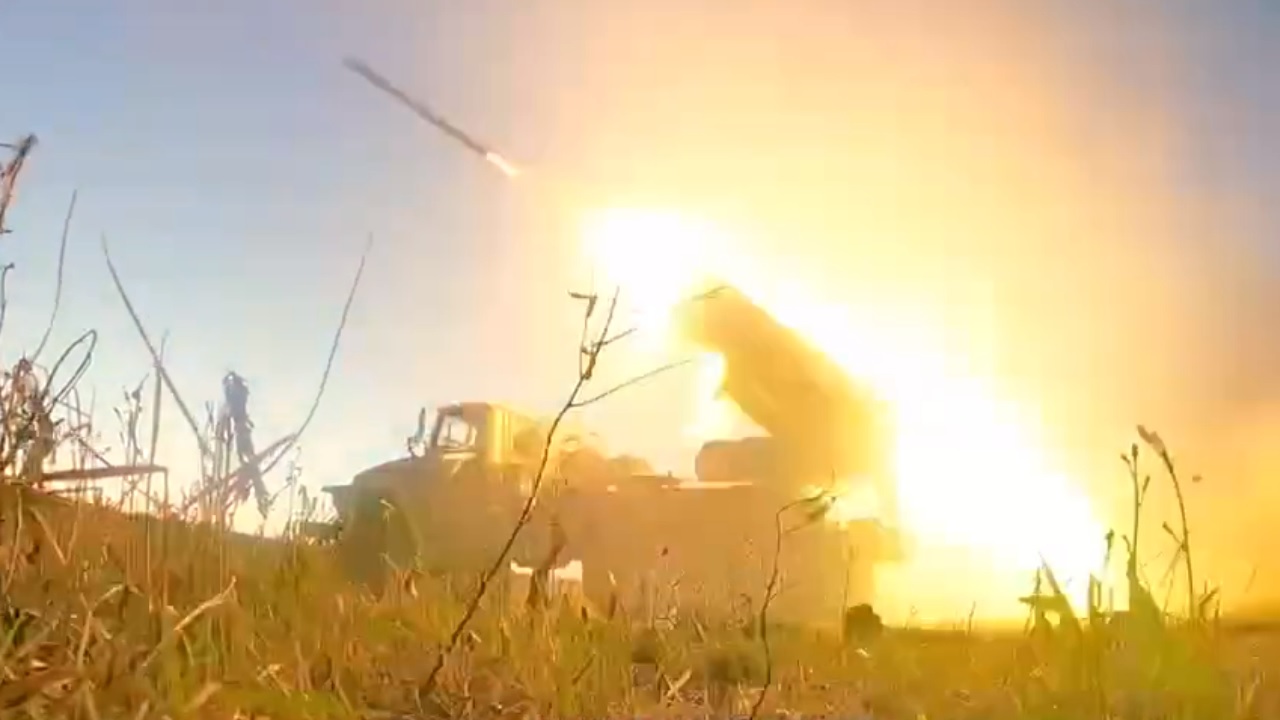A photo circulated on social media on Monday afternoon highlighted the desperate state that the Kremlin must be in – as it was of a BTR-50 armored personnel carrier (APC) that has reportedly been deployed to Ukraine.
It was recently reported that a number of ancient BTR-50 APCs were delivered to Russian forces in #Ukraine– we obtained a photo of one of them.
This unit appears to be a BTR-50PU command&staff subvariant, adopted in 1958, however it is unclear for what role it will be used now. pic.twitter.com/kHkAKLSQQ3
— ???????? Ukraine Weapons Tracker (@UAWeapons) March 13, 2023
The vehicle could be among the oldest military ground vehicles to see combat in the now-year-long conflict.
Based on the photo, which was shared by the Ukraine Weapons Tracker (@UAWeapons) social media account, the particular APC is a BTR-50PU command and staff sub-variant, which was adopted in 1958.
It is unclear what role this antiquated piece of hardware will be used for, but the model was noted to be an unarmed transport.
Capable of carrying 10 soldiers, the vehicle has seats for a commander and his staff, including four positions for radio operators, while two more are for the vehicle’s command and driver.
It was designed to serve as a mobile command post and is thus equipped with one or two generators to power the various radios and communication equipment, as well as a 10-line field telephone switchboard.
The staff vehicle also has a collapsible table, a second small table for the commander, two hammocks, and three ladders.
The tracked amphibious APC is equipped with homogeneous, cold-rolled, welded steel armor – considered very thin by modern standards at just 13mm at the front, 10mm on the sides and top, and 7mm at the rear.
It cannot protect against large shell fragments or .50 caliber machine gun rounds, while even 7.62mm small arms fire could likely penetrate the sides.
The British Ministry of Defense (MoD) had previously reported that the BTR-50 APCs, first fielded in 1954, had been deployed to Ukraine earlier this year.
Early Cold War APC
The BTR-50 was developed in the early 1950s, and it utilized the chassis of a PT-76 light amphibious tank with a new superstructure added to the front of the vehicle.
The basic troop transport version could carry 20 infantrymen on bench seats.
Much like with World War II-era troop carriers, the soldiers would embark and disembark the APC by climbing over the sides of the hull. It featured a boat-shaped hull, which was designed to be hermetically sealed and thus made it amphibious for river crossings.
Though it entered service with the Soviet Army in 1954, it was replaced in frontline service by the BMP-1 infantry fighting vehicle (IFV) before it was ever used in actual combat.
In fact, it likely first had its baptism of fire during the Six-Day War of 1967 when it was employed with Egyptian and Syrian forces.
By most accounts, the BTR-50 performed poorly and a number were captured by the Israel Defense Force (IDF).
The BTR-50 was used again by Egypt, Syria, and Israel in the Yom Kippur War (1973), and an additional number were captured by the IDF. Some of those vehicles were later provided to the South Lebanon Army, the Christian militia allies of Israel.
It is now unclear how many of these Cold War-era vehicles are being sent to Ukraine, but along with the deployment of T-62 medium tanks, it may speak of pure desperation that vehicles with such a poor combat history are being put back into action.
MORE: F-35 – The Best Fighter Jet Ever?
MORE: SR-72 – A Mach 6 Bomber?
MORE: Su-57 – Is Russia’s Stealth Fighter Doomed?
Author Experience and Expertise
A Senior Editor for 19FortyFive, Peter Suciu is a Michigan-based writer. He has contributed to more than four dozen magazines, newspapers, and websites with over 3,200 published pieces over a twenty-year career in journalism. He regularly writes about military hardware, firearms history, cybersecurity, politics, and international affairs. Peter is also a Contributing Writer for Forbes and Clearance Jobs. You can follow him on Twitter: @PeterSuciu.

